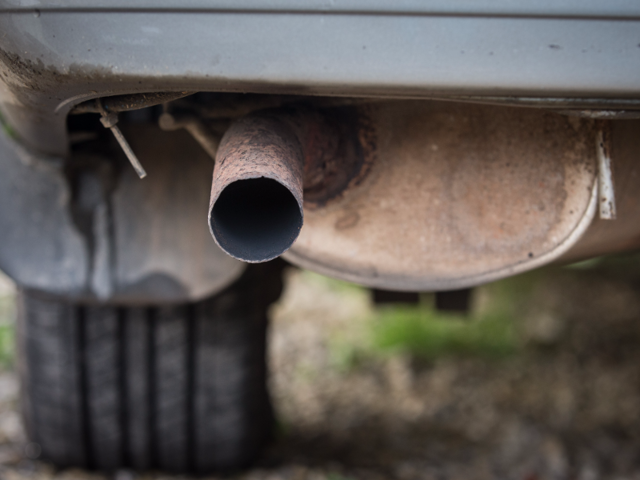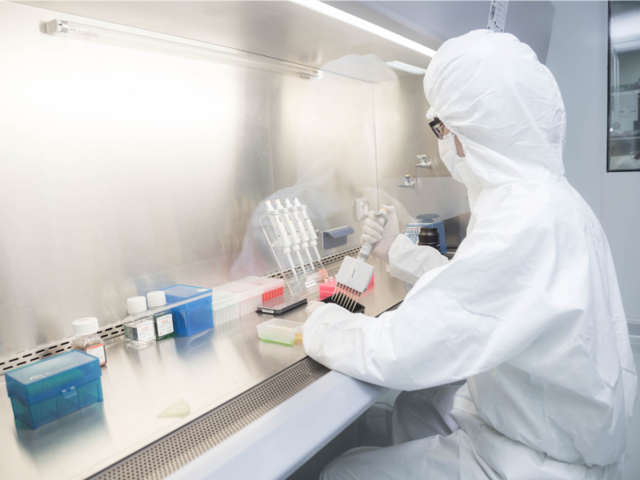Cancer is the number two cause of death in the US, second only to heart disease.
It fundamentally affects the way our cells grow and divide, changing them in perverse ways. All cancer is a result of DNA damage or genetic mutations in our DNA. The nasty, debiltating class of diseases spreads through a body like an invading army, as toxic cells grow relentlessly into unruly tumors.
Some cases of cancer are out of our control, determined by genetic defects and predispositions passed down from one generation to the next, or spurred by genetic changes we undergo through our lifetime.
But we also know that breathing in certain substances, eating specific things, and even using certain kinds of plastics ups the risk of developing some deadly cancers.
Here are some known carcinogens (cancer-causers), as well as a few more things scientists are zeroing in on as prime suspects :
Some cases of cancer are out of our control, determined by genetic defects and predispositions passed down from one generation to the next, or spurred by genetic changes we undergo through our lifetime.
But we also know that breathing in certain substances, eating specific things, and even using certain kinds of plastics ups the risk of developing some deadly cancers.
Sugar

Scientists now know that eating too much sweet stuff can not only lead to diabetes, it can also actively damage your cells and up your odds of developing cancer.
But that's not all.
New research suggests that sugar may fuel tumor growth in the body, because cancer loves to use sugar as fuel.
"The hyperactive sugar consumption of cancerous cells leads to a vicious cycle of continued stimulation of cancer development and growth" Belgian molecular biologist Johan Thevelein said when his latest study was released in 2017. Scientists say the groundbreaking reserach gives us a better understanding of how sugar and cancer interact, and could one day help create targeted diet strategies for patients.
Processed foods

Any food that comes in a crinkly plastic wrapper, is industrially sealed, and built to last for months without spoiling may be a quick fix for a hunger pang on-the-go, but it's also likely upping your risk for cancer.
Scientists in France recently zeroed in on a link between people who eat more processed foods, and those who develop more cancer.
They're not sure yet whether it's the shelf-stabilizing ingredients in the food that's the problem, the plastic packaging, or some combination of the two. And because their study was correlative, it's possible there's some other hidden factor at work.
Smoking

Even though the tobacco industry tried to cover this one up, we've known for years that tobacco smoke has at least 70 cancer-causing chemicals inside. And it's not just smokers who are affected: people who inhale secondhand smoke can develop deadly forms of cancer too.
The Centers for Disease Control and Prevention says "nonsmokers who are exposed to secondhand smoke at home or at work increase their risk of developing lung cancer by 20–30%."
People who chew their tobacco are at increased risk, too.
Tanning and unprotected sun exposure

According to the Skin Cancer Foundation, people who use a tanning bed before age 35 up their risk of developing melanoma by 75%.
Regular sun can hurt you too, so wearing protective clothing, sunscreen, and finding shade are all good ideas if you're going to be out in the sunshine for more than 15 minutes.
Toxic chemicals at work

Some people have no choice but to work with cancer-causing substances.
Those at risk of coming in contact with cancer-causing substances on the job include aluminum workers, painters, tar pavers (who come in contact with the carcinogen benzene), rubber manufacturers, hair dressers who deal with dyes every day, nail salon workers breathing in dangerous fumes, and everyone who works the night shift. The World Health Organization classified nighttime work as a possible carcinogen in 2007.
The CDC has its full list of occupational cancer hazards available here.
Arsenic

Arsenic, a natural part of the earth's crust, is toxic in its inorganic form. It's often found in contaminated drinking water in places like Bangladesh, or spots where irrigation systems for crops use arsenic water.
The WHO says at least 140 million people in 50 countries drink water containing high levels of arsenic.
It's also one of the agents in tobacco that makes smoking cause cancer.
Charred meat, and grilling over an open flame

Smoky meats from the grill may be tender and tasty, but they probably also increase your risk of cancer. That's because the muscle meats contain compounds called Heterocyclic amines (HCAs) and polycyclic aromatic hydrocarbons (PAHs).
According to the National Cancer Institute, when meats like beef, poultry, or fish are cooked over a hot open flame or pan fried at high temperatures, the fat and juices they release into the fire spark flames with the dangerous chemicals inside that then cook into the meat we eat.
They're not positive these cause cancer, but in lab tests, they change DNA in ways that might increase cancer risk.
Coal

Coal miners have had higher lung, bladder and stomach cancer rates for years.
Coal gasification is dangerous because when coal reacts with oxygen, steam and carbon dioxide it forms a gas containing hydrogen and carbon monoxide.
Miners often get cancer from inhaling coal dust.
Alcohol

Regular, heavy alcohol consumption can up your risk of developing several different kinds of cancer, including throat, liver, breast and colon cancer.
According to the National Cancer Institute, "the risk of developing cancer increases with the amount of alcohol a person drinks."
Diesel exhaust

Diesel fumes have more than 30 different things inside that can cause cancer.
Salt-cured meat or fish and pickled foods

Salt-cured fish, which is popular in China, is high in nitrates and nitrites, known carcinogens in animals that may also cause cancer in humans. The chemical compounds can damage DNA, spurring head and neck cancer.
According to Cancer Research UK, "People from China, or with Chinese ancestry living in the UK, have higher rates of nasopharyngeal cancer than other ethnic groups. This might be due to their diet."
Eating lots of pickled foods can also up your risk for stomach cancer.
Fracking

Chemicals used in oil fracking that may be released into air and water include the cancer-causers benzene and formaldehyde.
Processed meats like ham, bacon, and sausages

Sorry.
The World Health Organization says processed meats like hot dogs, ham, bacon, and sausage can cause cancer.
That's because the meat has been treated in some way to preserve or flavor it,using techniques like salting, curing, fermenting, or smoking.
The WHO also thinks that any kind of red meat at all may be linked to increased risk of cancers like colorectal cancer, but they can't say that for certain yet.
Asbestos

Asbestos was used as an insulation material for years before the dust was linked to lung cancer.
Asbestos is still not completely banned in the US, though the Environmental Protection Agency regulates how it can be used.
Birth control and estrogens

Hormones can cause cancer, too. Women who start menstruation early or go into menopause late can increase their risk of breast cancer because they're exposed to more estrogen and progesterone made by the ovaries.
Going on birth control can also increase a woman's risk for developing both breast and cervical cancers.
Viruses

Catching certain kinds of viruses can indirectly up your risk for cancer. That's because in some situations, viruses trigger genetic changes in cells that can contribute to cancer.
According to the CDC: "Some viruses linked to cancer are the human papillomavirus (HPV), which causes cervical cancer; hepatitis B and C viruses, which can cause liver cancer; and the Epstein-Barr virus, which may cause a type of lymphoma. Also, the H. pylori bacterium can cause gastric cancer."
Your family

Some cancer risk is passed down from one generation to the next. Genetic mutations play a key role in about 5-10% of all cancers.
"Genetic changes that promote cancer can be inherited from our parents if the changes are present in germ cells, which are the reproductive cells of the body (eggs and sperm)," the National Cancer Institute says.
For example, certain kinds of breast cancer are a result of mutations in the BRCA1 and BRCA2 genes.
Being overweight

Being obese can put you at increased risk for developing breast, colon, rectum, esophagus, kidney, pancreas, and other cancers.
This can be prevented by eating healthy foods and getting enough physical activity, both of which not only help people maintain a healthy weight, but also reduce the risk for some of those cancers.
Formaldehyde

Scientists have known for years that formaldehyde can cause nasal cancer in rats.
The preserving agent and disinfectant is used in some glues and building products, and the International Agency for Research on Cancer declared it can cause cancer in humans too.
Air pollution

Smoggy air, and the particulates in it, can also lead to cancer.
Soot in general isn't great. In London, people started noticing lots of chimney sweeps developing scrotum cancer in the 1770s, and further study showed a conclusive link between the backbreaking chimney work and higer scrotum cancer rates. Soot inhalation has also been linked to lung, esophageal, and bladder cancers.
Silica

Silica is a natural mineral found in sand, stone, and concrete. But when construction workers and miners inhale silica particles by cutting, sawing or drilling into rock, it can up their risk of developing lung cancer.
Radiation

It's pretty obvious when you look at survivors of atomic bomb attacks that radiation can cause cancer.
We can also get it from solar UV rays and x-rays.
But one trip to the doctor isn't going to give you cancer: the link beween radiation and cancer risk tends to show up in people who've been exposed to high doses of radiation, like victims of the Chernobyl nuclear accident, and (ironically) cancer patients, who are sometimes treated with high doses of radiation.
Still, the American Cancer Society cautions that "there is no threshold below which this kind of radiation is thought to be totally safe."
Chronic, long-term, DNA-damaging inflammation

Chronic inflammation from things like long-term infections, bowel diseases or obesity can all do serious damage to a person's DNA, and lead to higher instances of cancer.
Some plastics

Plastics can be dangerous, especially when they leach chemicals out through scratches or cracks in a container.
BPA is a synthetic estrogen that's been used in many plastics and resins since the 1960s. (And as we pointed out earlier, estrogens can cause cancer.) BPA resins can be used inside products like metal food cans as sealants, while polycarbonate BPA plastics can include water bottles and food storage containers. BPA even shows up on the shiny side of receipt paper, to stabilize the ink.
While many plastic manufacturers have started labeling their products as "BPA-free," there's still a lot of the breast and prostate cancer-causing stuff around.
No comments:
Post a Comment